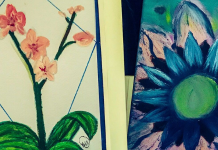
The Wheel of the Year has turned again and now Ostara, known secularly as the vernal equinox, is on the horizon. This is a time of celebration for many, because it marks the date when the day starts to become longer than the night.
Ostara, named after the Germanic fertility goddess, has been celebrated in many forms for hundreds of years. Spring is seen as the time of rebirth and fertility; it is a time of great celebration as the warmth returns to the Earth and the plants and animals flourish.
Eggs and rabbits
The most common symbols associated with Ostara are eggs and rabbits. In ancient times, both were associated with fertility and it was thought that eating rabbit meat could cure barren women.
The goddess Ostara arrived late one spring and found a bird unable to fly, his wings frozen in snow. The story goes that the goddess took pity on the bird and took him in as her pet. Because he could no longer fly, she turned him into a hare that could out run any hunter. She also gave him the ability to lay colourful eggs. (This might be the inspiration for the Cadbury bunny that we know and love.)
Unfortunately, as rabbits are very fertile creatures, Ostara became angry with the rabbit’s love affairs, and cast him into the sky where he would remain forever in the stars as the constellation Lepus under the feet of Orion, the Hunter.
However, once a year the kind goddess allowed the rabbit to return to earth and give away his coloured eggs to children celebrating the Ostara festivals each spring.
Ostara customs
Keeping with tradition, Ostara is a great time for spell work involving new beginnings, birth, fertility, children and love. Conveniently, there is a new moon coinciding with Ostara this year to add a cosmic punch to your rituals.
Prepare a feast of seasonal foods and fill your altar with fresh flowers, colourful eggs, images of hares and representations of the maiden goddess. To share the spirit of the season with your loved ones, especially the children in your life, organize an egg hunt.
Decorating Ostara eggs
Eggs have been considered to have magical properties for thousands of years by cultures all over the globe. The first record of humans painting eggs was prior to 580 BCE in the Persian Empire. People painted eggs as part of No Ruz, the Zoroastrian New Year. There are also Pyskana Eggs dating back to pre-Christian Ukraine. Eggs were covered in wax and decorated to honour of the sun god Dazhboh.
While there are many store bought options for colouring eggs, try to use natural dyes instead. Boiling an egg in water with a pinch of paprika will turn it pink, a cup of grape juice for purple, coffee grounds will give you a golden shade and frozen spinach will bring out a light green.1
Using Ostara eggs in ritual
You can bless the eggs with spells of fertility and abundance and then, depending on your spell, eat them, bury them in your garden or use them as decorations. Baskets of coloured eggs can be placed to represent the quarters when casting a magick circle.
If you are really crafty, you can draw sigils, symbols, or runes on your eggs with a white crayon before you dye them, the wax area will stay white, leaving a beautiful effect on the shell.
Be mindful of what you write on the shells as the energy will fuse with the egg. For example, if you want to bring romantic love into your life this spring, use symbols like hearts and words associated with romance.
During your Ostara ritual, invoke your choice of deity or spirit and charge the egg with your intention. After the power is raised, eat the egg and let the magic start from within. Save the egg shell to bury in your garden as an offering to the earth.
On the flip side, you can use the eggs to dispel negativity. Write aspects of your life that you would like to be rid of this spring and crush the egg, then bury it outside. As the egg decomposes, you should find success in leaving behind what ails you.
As eggs are associated with fertility, another option is to charge your eggs with prayers of fertility during ritual and then bury them in your garden to help the plants grow. It is said that burying an egg on the four quarters of your property will bring prosperity to a household.
Just remember, if you plan on eating the eggs after, they take on the flavour of the dyes, so maybe save the golden ones for burying — unless the idea of coffee flavoured eggs appeals to you. And a friendly word of advice, it is not recommended to eat boiled eggs that have been left at room temperature for longer than two hours.
No matter how you choose to celebrate Ostara, rejoice because spring is here and the world will soon be bursting with life.
Image credit: Praktyczny Przewodnik
- For more on natural egg dyes, see “Use Natural Dyes to Color Your Ostara Eggs.” [↩]








